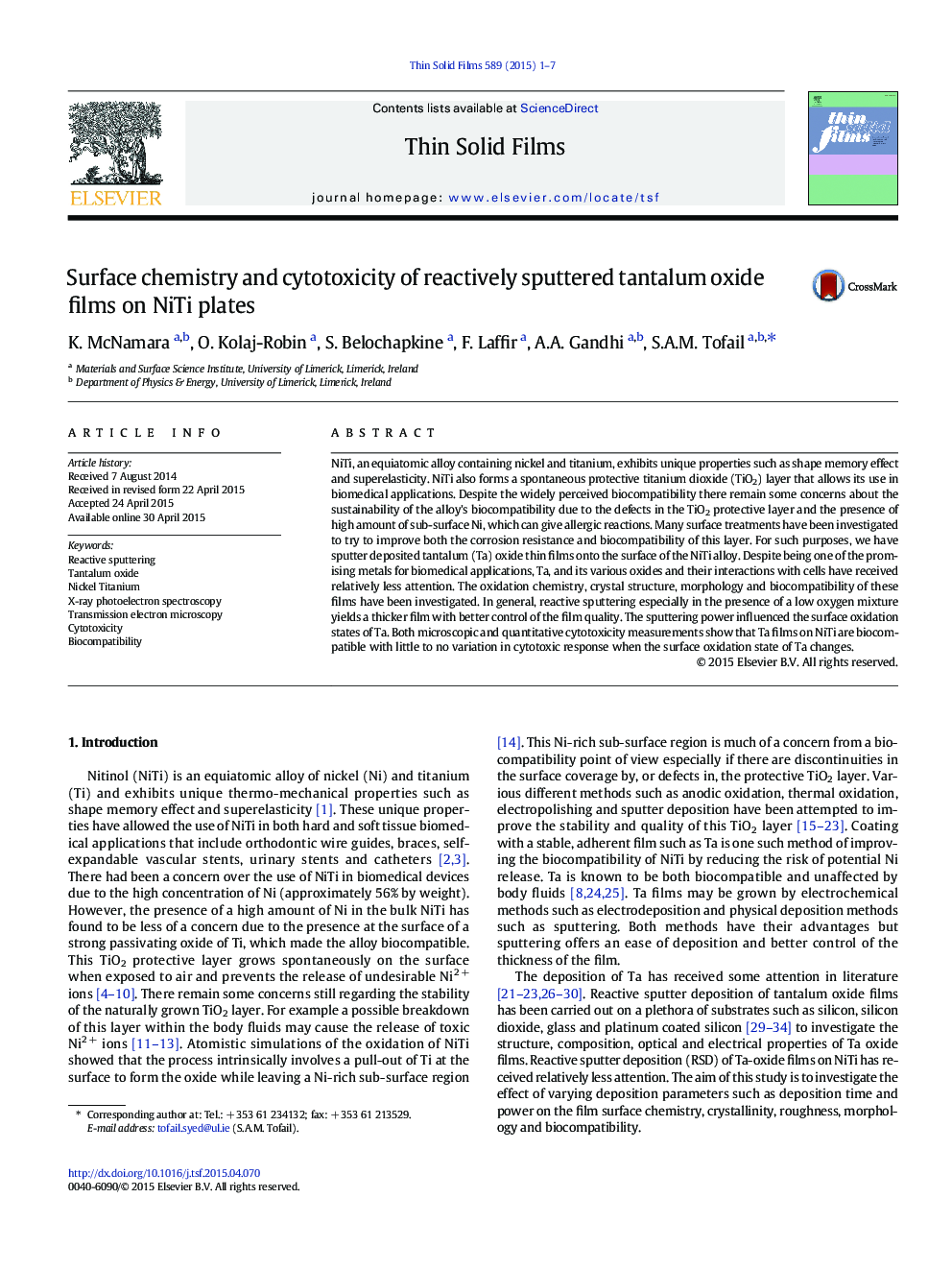| Article ID | Journal | Published Year | Pages | File Type |
|---|---|---|---|---|
| 1664596 | Thin Solid Films | 2015 | 7 Pages |
Abstract
NiTi, an equiatomic alloy containing nickel and titanium, exhibits unique properties such as shape memory effect and superelasticity. NiTi also forms a spontaneous protective titanium dioxide (TiO2) layer that allows its use in biomedical applications. Despite the widely perceived biocompatibility there remain some concerns about the sustainability of the alloy's biocompatibility due to the defects in the TiO2 protective layer and the presence of high amount of sub-surface Ni, which can give allergic reactions. Many surface treatments have been investigated to try to improve both the corrosion resistance and biocompatibility of this layer. For such purposes, we have sputter deposited tantalum (Ta) oxide thin films onto the surface of the NiTi alloy. Despite being one of the promising metals for biomedical applications, Ta, and its various oxides and their interactions with cells have received relatively less attention. The oxidation chemistry, crystal structure, morphology and biocompatibility of these films have been investigated. In general, reactive sputtering especially in the presence of a low oxygen mixture yields a thicker film with better control of the film quality. The sputtering power influenced the surface oxidation states of Ta. Both microscopic and quantitative cytotoxicity measurements show that Ta films on NiTi are biocompatible with little to no variation in cytotoxic response when the surface oxidation state of Ta changes.
Keywords
Related Topics
Physical Sciences and Engineering
Materials Science
Nanotechnology
Authors
K. McNamara, O. Kolaj-Robin, S. Belochapkine, F. Laffir, A.A. Gandhi, S.A.M. Tofail,
